Some posts on this site contain affiliate links. If you book or buy something through these links, I earn a small commission (at no extra cost to you). Take a look at my privacy policy for more information.
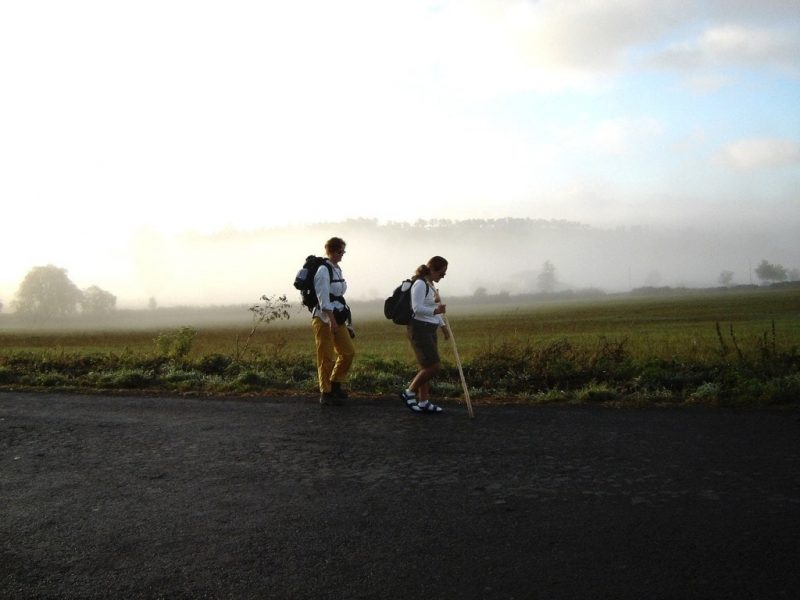
Recently, I headed to the north coast of Spain to follow the Camino del Norte. This route of the Camino de Santiago pilgrimage passes through a belt of four regions along the northern coast known as Green Spain, famed for its stunning coastal landscapes.
But, since not too many people have heard of the Camino del Norte, I thought I’d publish this mini-guide to share a bit more information.
Hopefully, this will give you an idea of exactly what the Camino is, where I went, and what the pilgrimage is all about. This is just a very brief guide to the Camino del Norte, though. If you want to find out more I’ve listed a few great resources at the end of this post.
What Is the Camino de Santiago?
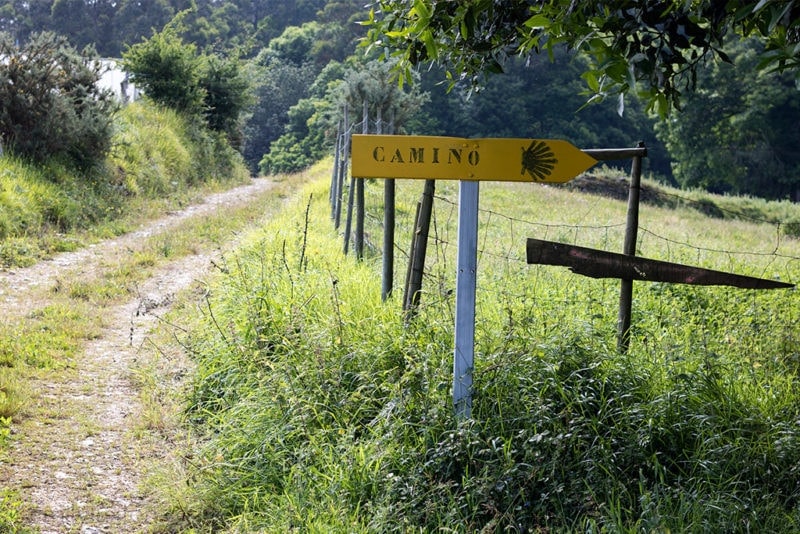
For over a thousand years, Santiago de Compostela has been a place of pilgrimage for Christians. In the year 830, the body of St James the Apostle was discovered in Galicia by a hermit. These relics have since become an important place of pilgrimage, and are now housed in the stunning Santiago Cathedral.
King Alfonso II the Chaste, the king of Asturias at the time, was the first to make the pilgrimage to pay his respects to Saint James. He came to Galicia from Oviedo, creating the route which is now called the Ruta Primitiva (Primitive Way). Today, there’s an entire network of routes leading to Santiago de Compostela. The best known is the Camino Francés, which was the star of Emilio Estevez’s movie The Way. But there’s also the Camino del Norte (Northern Way), the Camino Inglés (English Way), the Camino Portugués (Portuguese Way), and dozens more.
Camino de Santiago planning website Gronze.com (source of the below map) has a full breakdown of all the routes and variations of the pilgrimage.
These days, the Camino de Santiago is more than a Christian pilgrimage. Whichever route you choose, and however you follow it, the Camino is an adventure. Every year, thousands of people take on the challenge.
Their motives may be spiritual, personal, charitable, or simply the search for a new way to approach a country as diverse and fascinating as Spain. Whatever the motivation, the journey is sure to be an incredible one.
Why The Northern Way?
Also known as the Ruta de la Costa (coastal route), the main draw of the Camino del Norte is precisely that. It follows the coast. Around 80% of the route is coastal, passing windswept surfing beaches and secluded bays. Rugged cliff landscapes and picturesque fishing villages.
Being coastal can mean that the route is a little tougher than the more famous Camino Francés (French Way). The hilly and sometimes mountainous coastal terrain involves a lot of ascents and descents, and the route is considered more challenging than the Camino Francés.
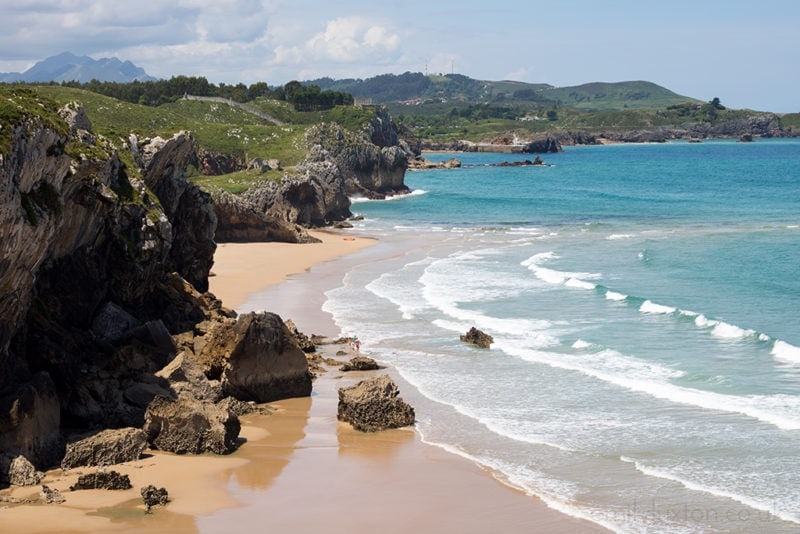
But, the fame of the inland French route means that it’s becoming overcrowded, while pilgrims can have the Camino del Norte almost to themselves at times. I hiked several small sections of the route across all four regions, and rarely passed any other hikers. I did, however, pass dozens of beautiful beaches that were completely deserted despite some gorgeously sunny weather. Choosing the road less travelled has real perks.
Another challenge of the Camino del Norte is the humid Atlantic weather. Rain is pretty likely at any time of year, and there can be strong coastal winds to deal with. Whilst the weather is very changeable and wet on the northern route, the inland Camino Francés can be far too hot and dry during summer. So the cooler northern route can be a much better option for summer hikers.
The Route & Highlights of the Camino del Norte
The Northern Route of the St James Way begins in the border town of Irún, at the bridge between Hendaya in France and Irún in the Basque Country. It then winds its way some 823km through Green Spain. The Camino del Norte hugs the coast all the way to Ribadeo on the Galician border, where it finally turns inland and towards Santiago de Compostela.
The highlights of each region, and particularly the ones that I was lucky enough to discover, are laid out below. This brochure from the Basque Country tourism board contains a lot more details about the route, so download it for more information. I’ve also included some links to my favourite posts from the other bloggers on my trip, so check those out for more details!
Basque Country
The autonomous community of the Basque Country in northern Spain has a unique culture. Pintxos bars with plate loads of tapas-like pintxos (small bites of food served on cocktail sticks). Pretty villages with distinctive Basque architecture.
The staggering cliffs of the Flysch in Zumaia, a rock formation created by 100 million years of crashing waves. It’s a beautiful region, and a fascinating one to explore as you follow the Camino del Norte.

In the Basque Country, the Camino de Santiago begins in Irún and follows the coast all the way to the Cantabrian border. Along the way, it passes through pretty coastal towns like Hondarribia, Pasai Donibane and Pasai San Pedro, as well as the larger cities of the San Sebastián, with its picturesque old town, and trendy Bilbao.
Basque Country Highlights
- Albaola – a working museum and sea factory in Pasai San Pedro. Inside, a 16th century whaling ship is being rebuilt by hand, using centuries-old shipbuilding techniques.
- A walk around the Old Town of San Sebastian (and perhaps a day or two at it’s stunning beaches).
- A boat tour of the Basque Coast Geopark to discover the wild cliffs and amazing fossils of the Flysch.
- The Monastery of Zenarruza at the foot of Mount Oiz – an important religious stop along the Camino del Norte.
- Urdaibai Bird Centre. Whether you’re a big bird watcher or not, the Bird Centre in the wetlands of Urdaibai is a great stop off. There’s an excellent museum and some great equipment in the observatory, so you can spot birds as they stop off along their own great pilgrimage from North to South (or vice versa).
- A visit to Casa de Juntas, the council building in Gernika. This is home to the most important institutional body in Vizcaya, and is the site where the Lords of the Biscaya bay met in the shade of the Basque Country’s iconic oak tree.
- Metropolitan Bilbao, a modern city with some incredible architecture. Don’t miss the Bilbao Guggenheim Museum.
See Also: Falling in Love with the Basque Country by Claudia Tavani.
Cantabria
Cantabria is considered one of the greenest parts of Spain, and is home to some stunning landscapes. From dramatic gorges and stark mountains, to rolling green hills and simplistic farmland – this is the perfect backdrop for trekking.
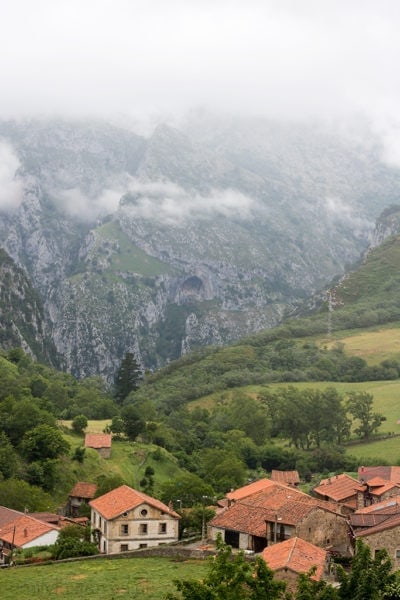
The Camino del Norte enters Cantabria at Castro Urdiales on the border, and winds along the coast through a variety of villages to Santander. The Cantabrian capital, with its huge natural harbour, is a pretty town with a sweeping seafront and lively culture. From here, the path heads west through picturesque villages like Santillana de Mar and Comillas, to reach the border with Asturias.
Cantabria Highlights
- Castro Urdiales, an interesting coastal town with strong ties to the Camino. Particularly worth seeing is the town’s Gothic church perched on the edge of the Atlantic ocean.
- A detour to the famous Altamira Caves near Santillana de Mar. Inside the Altamira Museum, visitors can view an exact replica of the cave and it’s incredible prehistoric paintings. On Fridays, a lottery is held to allow a small group of people access to the actual caves, so it’s worth a visit if you’re in the area at the right time.
- In Santander don’t miss the 20th century Palacio de la Magdalena, once the summer residence of the Spanish royal family.
- The beautiful town of Santillana de Mar, a town which is actually nowhere near the sea!
- Also in Santillana de Mar, the Colegiata de Santa Juliana is another important religious stop along the Camino del Norte.
- Another great detour en route is a trip to Fuente Dé. This is a small town on the Camino Vadiniense, an inland route that connects the Camino del Norte with the Camino Francés, so it’s an interesting stopover. In the heart of the idyllic mountain scenery of Picos de Europa National Park, this town is famous for its cable car which provides some amazing views. Provided you have better weather than I did.
- Another important side pilgrimage in Cantabria is the Camino Lebaniego, which ends at the Monasterio de Santo Toribio in Liébana. This monastery is the resting place of the Lígnum Crucis, supposedly the biggest surviving piece of the cross on which Jesus was crucified, and it’s one of Cantabria’s most significant religious sites.
See Also: Mountains, Caves & Sea: It’s Cantabria Calling by Duncan Rhodes.
Asturias
A beautiful region of rugged coastline and wooded mountain landscapes, Asturias has its own unique spirit. Here, the local heritage and histories are deeply embedded in the modern day. With its penchant for cider and wholesome, rustic food, Asturias is also a dream for foodies.
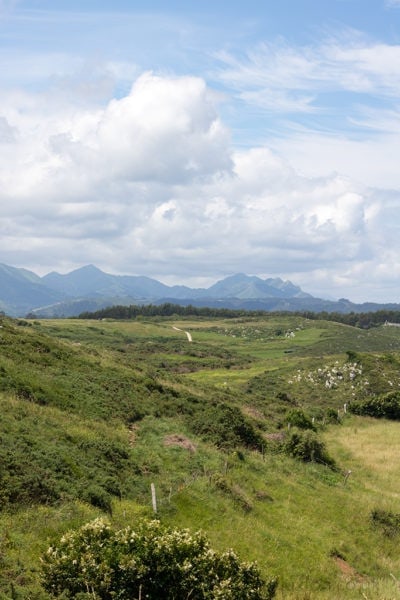
This is the last region in which the Camino del Norte hugs the coast, and it has some of the nicest beaches I saw in northern Spain. There are also fewer big towns along the Asturian section of the route.
One of the first is Llanes, a relatively large town with some gorgeous beaches. The biggest city in the region is Oviedo, which isn’t technically on the Camino del Norte but makes a good detour. It’s the coastal villages like Cudillero and Luarca that are the real highlights along this section of the Camino, though.
Asturias Highlights
- Llanes. This is a pretty town of colourful Indiano mansions and a historic quarter which has been declared a Historic-Artistic Site. The coastline stretching west to Niembro features dozens of secluded white sand beaches – 32 of them within a 45km stretch.
- The coastal paths of Asturias are also a cyclist’s paradise (post by Laurel Robbins). There are some really good trails that offer incredible views, as well as access to the region’s stunning beaches.
- A detour to the town of Oviedo, starting point of the very first pilgrimage to Santiago, is well worth the trouble. The town is beautiful, and the cathedral here is another important religious site on the Camino.
- The gorgeous fishing village of Cudillero. Perched on the coast within a natural amphitheatre formed by the mountain walls, this village has some amazing views, and some really lovely locals (see my post, linked below).
- Another stunning coastal town in Asturias is Luarca. Divided by a small river, this pretty little town of white houses circles a port filled with colourful fishing boats.
Galicia
In Galicia, the Camino finally turns inland to make the final stretch south-west to Santiago de Compostela. Swapping coastal views for forests and farmland, the way passes through historic towns and charming villages, like Lourenzá and Mondoñedo.
At Arzúa, the Camino del Norte merges with the Camino Francés and from here, all roads are one to the final stop of Santiago de Compostela. This is the capital of Galicia and the end of the pilgrimage. In the centre of Obradoiro Square, in front of the cathedral, a stone scallop shell signifies the end of the journey. The cathedral itself is, of course, the most important religious stop along the Camino. Inside is the tomb of Saint James the Apostle and the very reason for the Camino del Santiago.
READ MORE: my Food Guide to Galicia to find out what dishes you shouldn’t miss while you’re there!
Galicia Highlights
- Playa de las Catedrales. Just before leaving the coast, don’t miss the chance to visit the stunning “Cathedrals Beach” in Ribadeo. The beach is famed for it’s bizarre rock formations and caves. It’s also a protected site, so in summer visitors need to apply for a permit online to get access.
- Lourenzá, a quiet, historic town along the Camino. The Monastery of San Salvador de Vilanova Lorenza was renovated in 1732 by the architect behind the Cathedral in Santiago de Compostela, Casas y Novoa.
- A little further along the Camino lies Mondoñedo, another gorgeous historic town. The pretty historic centre has been declared a Property of Cultural Interest, and there are several notable historic buildings including the Cathedral-Basilica of La Asunción, which is a national monument in Spain.
- The Cistercian Monastery of Santa Maria de Sobrado dos Monxes is one of the last significant religious sites along the Camino del Norte. It’s also a place of pilgrim’s refuge, with huge dormitories for peregrinos (pilgrims).
- Santiago de Compostela – the final stop of the Camino de Santiago. Don’t miss a visit to the stunning cathedral, or the chance to take a walk on it’s rooftops for some incredible views of the city.
- A trip to Pazo de Oca just outside the city is the perfect way to relax once your pilgrimage is over. This stunning country home has some beautifully landscaped gardens.
Camino del Norte Travel Tips
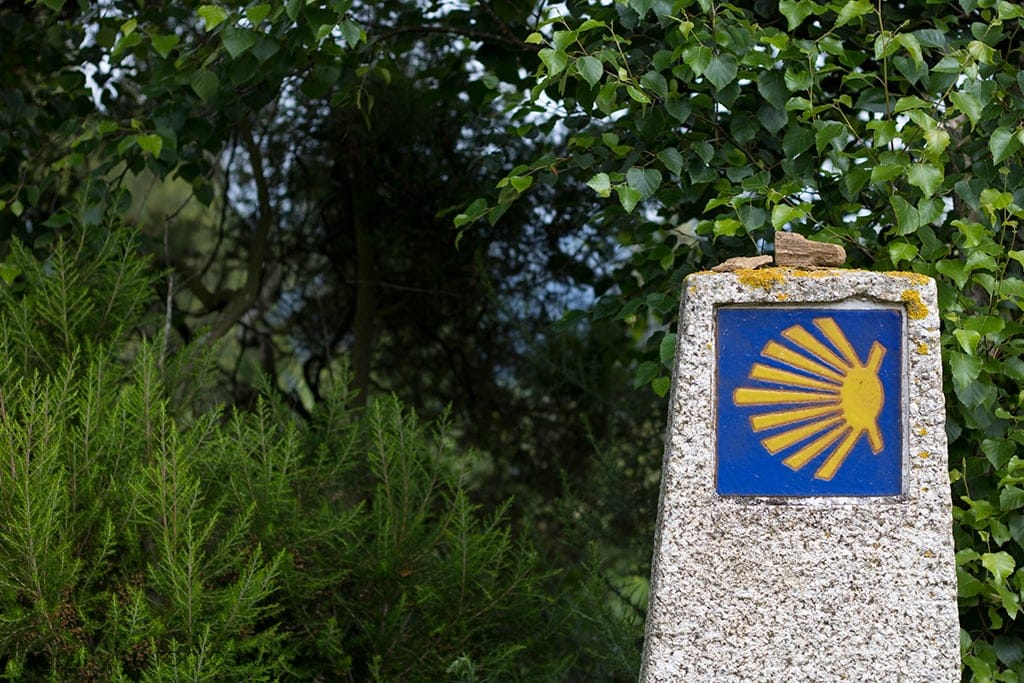
Planning a trip on the Camino de Santiago can be a big ordeal, so I recommend you do plenty of research. Here’s some basic information to get you started. Check out the resources at the end of this post for even more great information.
When to Go
The best time of year to walk the Camino del Norte is summer, from May to early October. July and August will be best in terms of weather.
Pilgrims Passport
At the end of the Camino, pilgrims are rewarded with the Compostela; the accreditation of the pilgrimage to the Tomb of St. James. In order to get this document, you need a completed Credencial del Pelegrino (Pilgrim’s Credential or Pilgrim’s Passport). You can pick up stamps at the official albergues along the route, as well as at bars and other associations. Find out more here.
Accommodation
Pilgrims stay at hostels, called refugios or albergues, which can be found all along the route. Only pilgrims carrying the Credencial and who are walking, cycling, or horse riding the Camino can stay at these hostels.
Many have no set fee; you simply make a donation based on what you can afford. The accommodation style is generally basic, but comfortable, dorm rooms – which are the perfect way to meet other pilgrims.
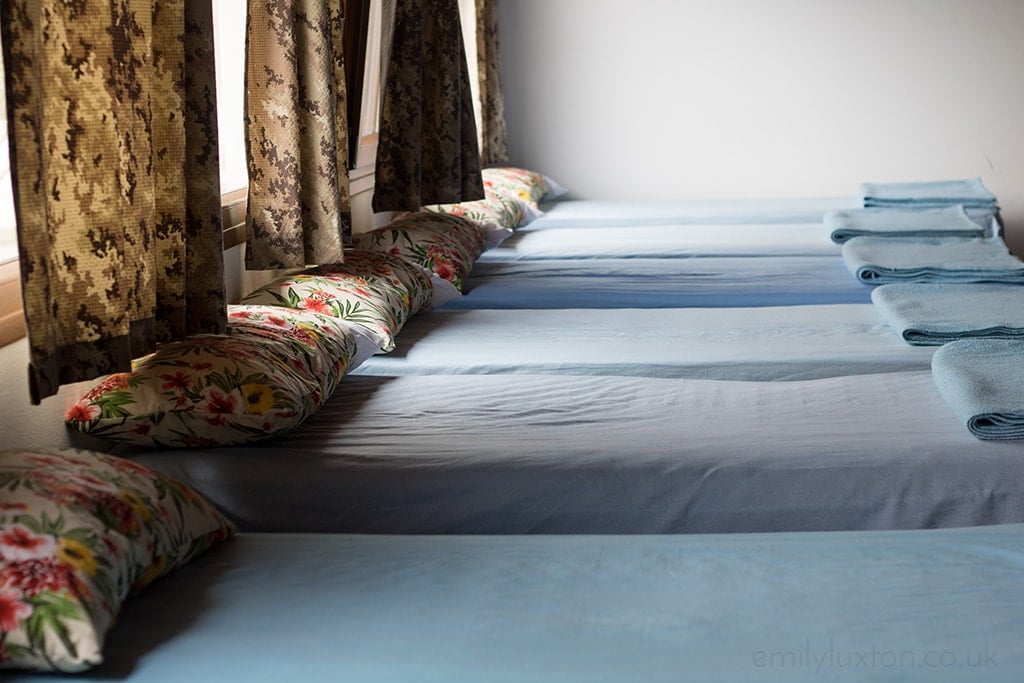
Alternatively, there are several private albergues in operation along the route, as well as pensiones, hostales, casa rurales, campsites, and small hotels. You’re free to choose the accommodation options that best suit your travel style and budget! But remember, you’ll need to visit some of the official albergues in order to get a stamp for your credencial.
Getting There
You can fly to Bilbao from London in less than two hours with a variety of airlines, including British Airways, Iberia, Vueling and Easyjet. From Bilbao you can take a bus to Irun (about 1 hour 40 minutes), or a train (about 3.5 hours changing at Lugaritz).
Resources
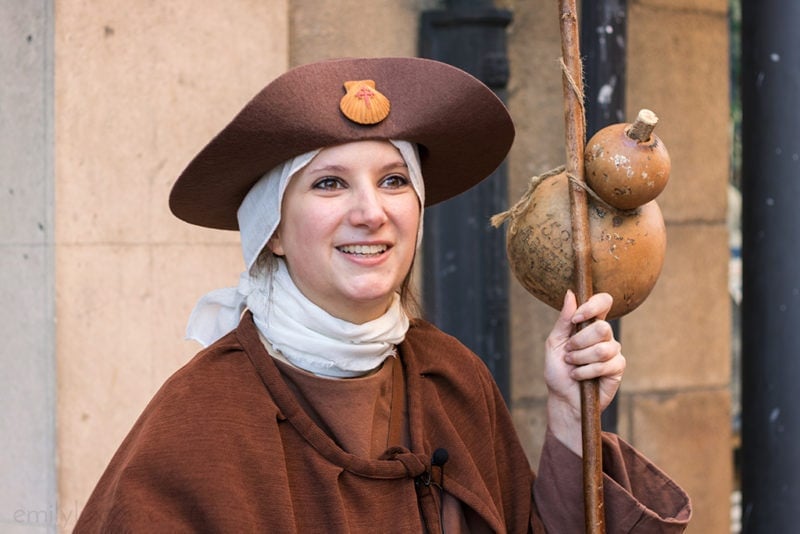
For more information about the Camino, check out some of the below resources. These websites and guides will be really helpful when planning your Camino del Norte trek:
Overview of the Camino de Santiago by the Spanish tourism board.
An in-depth guide to the Camino del Norte (also covers the other Northern routes). Includes maps of each stage. Published by Euskadi Turismo.
Website of the Official Pilgrim’s Office. For more information on the pilgrimage credential, certificate of distance, and planning the pilgrimage.
The Northern Caminos: The Caminos Norte, Primitivo and Ingles. Guidebook (paperback and eBook editions available) by Dave Whitson and Laura Perazzoli.
I’m Off Then: Losing and Finding Myself on the Camino de Santiago. Travel narrative about the author’s journey along the Camino de Santiago (French Route).
The Way. Emilio Estevez’s movie about the Camino de Santiago (French Route).
If you’ve ever completed the Camino de Santiago I’d love to hear from you! Scroll down the page to leave a comment and let us know about your experiences.
My visit to Green Spain was as part of a press trip organised by The Travel Mob on behalf of El Camino Santiago and the local tourism boards of Euskadi Basque Country, Cantabria Tourism, Turismo Asturias and Turismo Galicia for the #InGreenSpain and #VisitSpain campaigns. As always, all views and opinions (except quotes) are entirely my own and without bias.
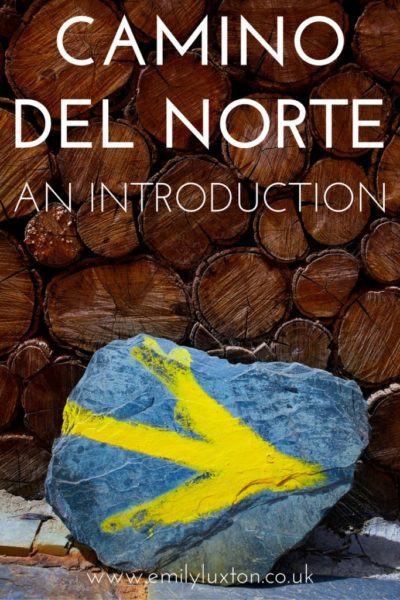

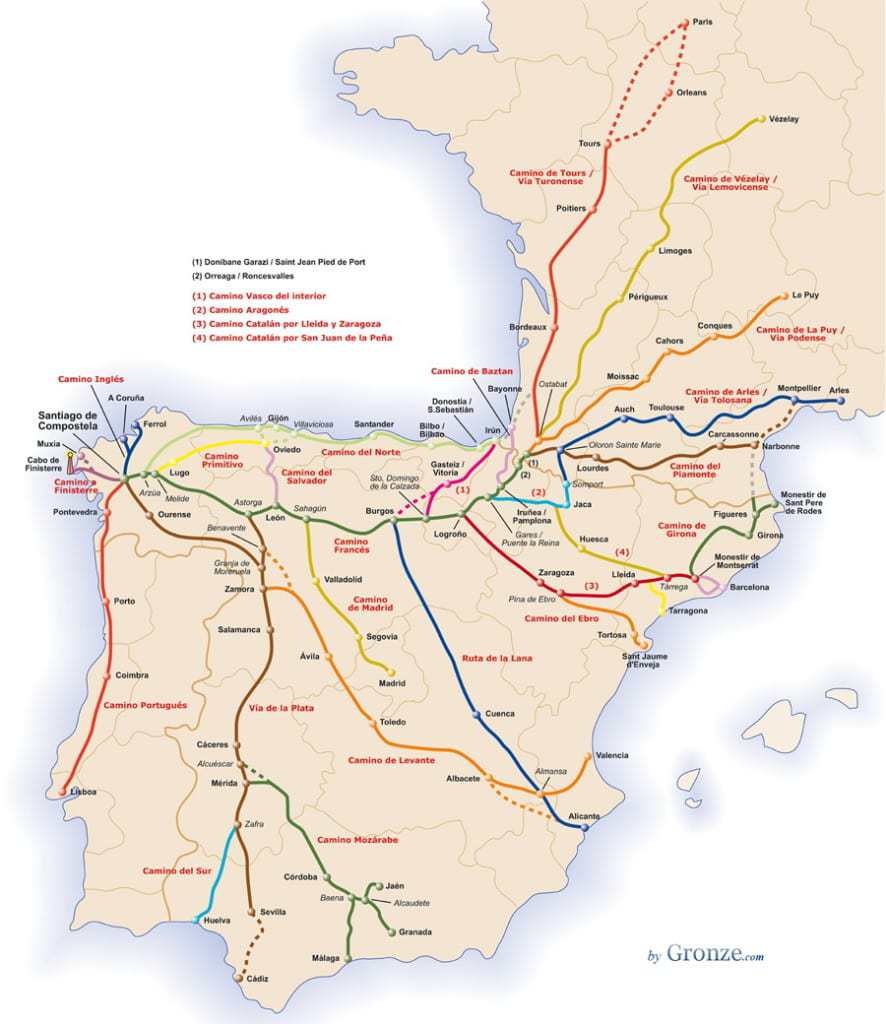
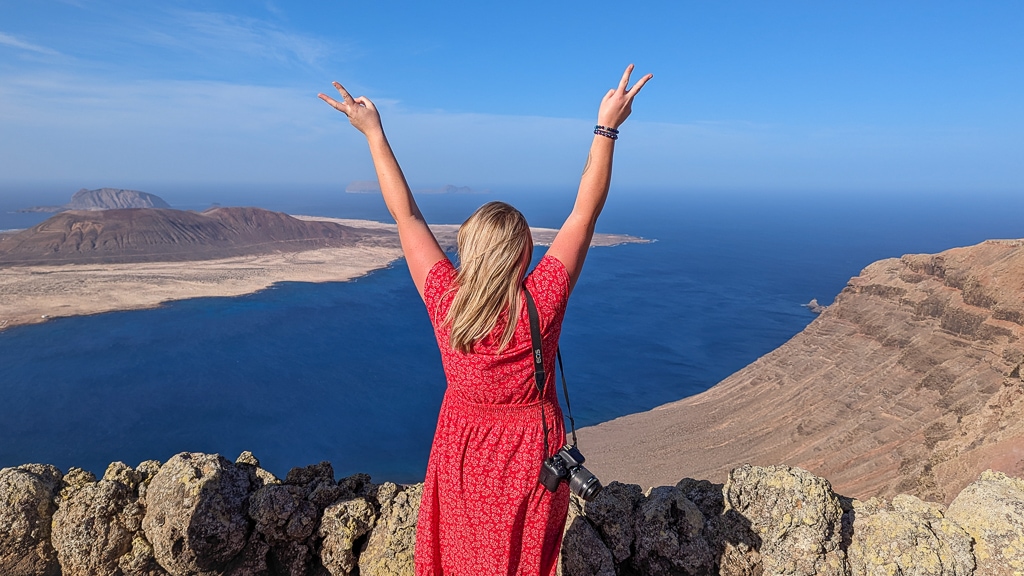
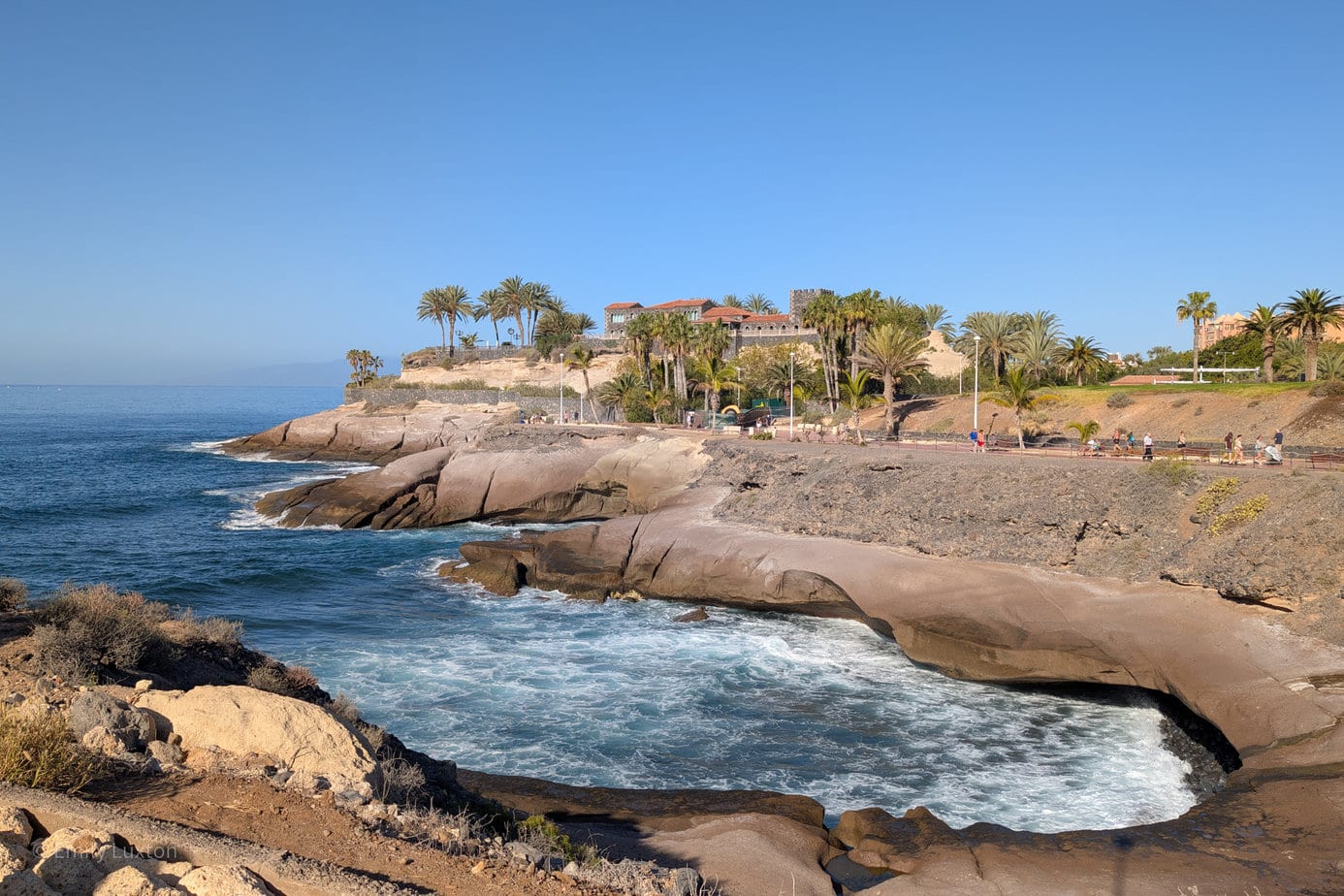
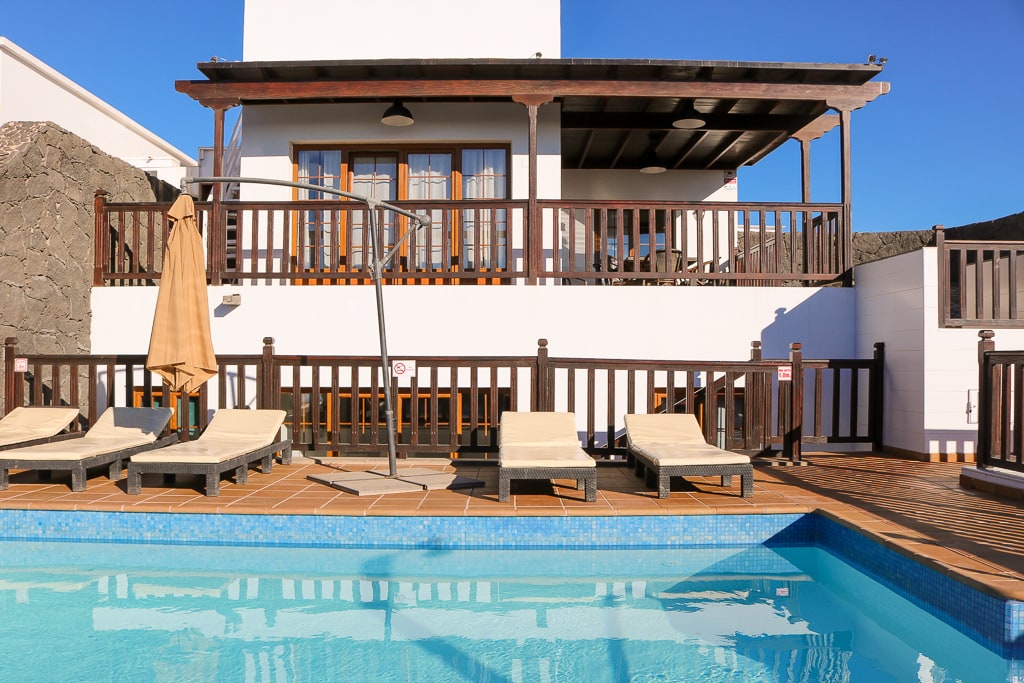
Emily, this is a great resource! Thanks for putting this together, definitely on my walking plans!
Thank you :) I hope it helps a few people!!
Hey, thank you very much, Emily! It’s very nice to see people trying to help the next brave ones who want to do the Camino in the near future. These are really good tips for everyone!
Thanks so much :) I loved my short time on the Camino and would love to revisit the region soon!
Hey! Looking to walk the Camino del Norte for a couple weeks at the end of June. How do you suggest I work backwards from Santiago de Compostela in terms of finding a good starting point…?
Hmm, good question. Can you go for some practice walks to work out how far you can walk in a day? That way you can work out how far you’ll be able to get on each day of your trip and work back that way! Good luck :)
Such a great experience the Camino del Norte! Did it this year and loved it, such a great Camino for foodies :)
Definitely! That part of Spain has AMAZING food!! Congrats on completing the Camino :)
Hi Emily, thank you so much for this information. I’m planning a week long trip – what would you recommend as good start/ end points for a trip of about 100km?
Thanks again! Anna
Hi Anna!! So glad it helps :) When are you setting off?
I suppose the start and end depends on how much you want to walk each day, and how long you want to stop for etc. I loved Santiago de Compostela so I’d recommend finishing up there, that way you can see the final end point for most pilgrims. Plus Galicia has some amazing scenery. But the best scenery (I thought) was in Basque Country towards the start of the route so that’s another good option.
Hope that helps a bit! Good luck with the trip!
A very interesting read, thanks.
I am hoping to cycle the Norte route in may/June. Did you see many cyclist ?
I didn’t see many but the paths are pretty decent so I’d think that it would make a great cycle :) Best of luck!!
Hi Paddy,
Have you completed the Del Norte by bike ?
I am very interested to hear your views and experiences.
I completed the CF in June / July with my mountain bike .. 100% on the hiking route .. and loved it.
Oh wow I didn’t know you could bike it – I bet that’s a gorgeous ride!!
Hi Emily,
Thank you for great write up and info on Camino del norte. Is it possible to start Camino del norte at Bilbao an dhow much could i cover in a week. i am able to cover approx 20km a day.
I believe it’s possible to start the Camino anywhere – it’s a public footpath so you can just rock up and start walking. I did a few short chunks of it starting at random points :) The only thing is you have to register for the Camino officially to be able to stay at some of the accommodations along the way – otherwise you’ll have to book your own accommodations. As for how much you can cover, if you can do 20km a day then I reckon you could do 140km in seven days but maybe have a look at the map and figure it out! Hope that helps :)
This is some great recent info! Hard to find recent experiences. I do have a question however, I’m looking to just do a small chunk of the camino from San Sebastian to Bilbao in August (busy season)…. Do you know if it’s common for albergues or hostels to be booked up if you are planning on finding accommodation each day depending on how far you trek? Or is always booking in advance a must?
I actually don’t know how common booking in advance is. When I was chatting to some of the workers at albergues they said people normally just turn up – and they’ll generally find a way to accommodate them. I suppose getting there earlier in the day when possible makes it more likely that you’ll get a bed! Some must let you book in advance but I’m not sure it’s always necessary! – hope that helps :)
This is so handy!!! I recently walked the Camino Frances and have done a couple of posts myself. This is persuading me to consider the Norte next! Thank you for all your info- and beautiful pictures. Walking by the coast must’ve been magical.
Oh wow – congrats for doing the Camino Frances! How was it?
The Norte is amazing for views. Can’t beat a nice cliff walk… although there are a lot of up and downs haha!
Thanks for this resource. Always good to have a different viewpoint. I attempted the Norte last June and got as far as Comillas before a violent case of food poisoning left me prostrate and needing home. I am going back at the end of May to finish (hope the weather is better than last year).
Ah that’s such a shame – I guess you can’t account for disasters like that. Good luck with your return attempt, fingers crossed for the weather :)
This is such a great article! Did you hike this alone and did you feel safe the entire time? I’m hoping to hike El Camino del Norte this upcoming summer by myself. The only reservation I have about it is the fact I’d be a solo, 19 year old female. Should this be a source of concern for me? I’ve done solo traveling all around the western US for weeks on end, so I’m not new to solo travel. But I am new to traveling overseas. Thanks!!
Thank you Maddy! I wasn’t alone – my whole trip was organised by the tourist boards of the local areas, so I was with other bloggers and some local guides. And I didn’t soley focus on the camino on the trip as we had to explore all the regions a bit more fully. However, as someone who has travelled solo in Spain a few times, and having seen how the camino works and what the hostels etc are like, I think it would be fine to do solo. My friend Samantha hiked the Camino de Santiago, the mainland route, completely solo a couple of years ago. While I know it’s different to the Camino de Norte, it is in the same country and I believe it’s very similar. She has a lot of great blog posts about her trip so take a look at those: https://thewanderingwanderluster.com/?s=camino and I’m sure if you reach out to her she can answer any questions you might have :)
But generally, I would say that you shouldn’t be concerned! Good luck with your trip – I hope you have an amazing time!
I’m an older man looking to hike the del Norte this september. How do you get registered so you can stay in the hostels? Like how do you get the official card?
I’m looking for a fellow hiker if any one is interested….. I am from Wisconsin. Thanks
Hi Dick! I took the phone number out of your comment since this is a public post and I’d hate for you to start getting spam calls etc! But if you’re looking to connect with other camino pilgrims there are lots of groups online. This Facebook group might be a good start: https://www.facebook.com/groups/caminodelnorte/
To answer your question about the Pilgrim’s Passport, there’s a round-up of sites on this blog post that should hopefully help: https://www.caminoadventures.com/blog/where-can-i-get-a-pilgrims-passport/
Have an amazing time!
Looking to hike the north route the summer of 2020. I have read that the elevation changes make it difficult. How hard was this? I am from the north west corner of the USA, which is know for its mountains. I’m just trying to get a gage for it. Was it strenuous? I’m 39, in decent shape and will hike with my 17 year old daughter.
It is a bit strenuous but I think it depends on your fitness and what you’re used to. The coastal path is very up and down. There are some fairly high climbs, but it’s not so much that the highs are super high, just that it repeats over and over so you’re constantly going up and down. The route is known to be more strenuous than the inland route, but if you’re in decent shape I think it’ll just be challenging, not impossible.
Hi Emily – we are planning to walk the Camino del Norte in early May.as our return flight on In mid July. This will be our sixth Camino, having previously walked in Portugal, Spain and France. We are looking forward to it. I will use your post as a planning tool. My wife is the admin of a Facebook page dedicated to the Camino Portuguese which was started as a place for our family to keep track of our journey but has now grown to over 5,500 members.
Hi Kevin! That sounds amazing, I hope it goes well. I’m impressed you’ve done 5 already, that’s brilliant. Will you ever consider the Via Francigena? It starts in Canterbry and ends in Rome!! Good luck with the Camino del Norte :)